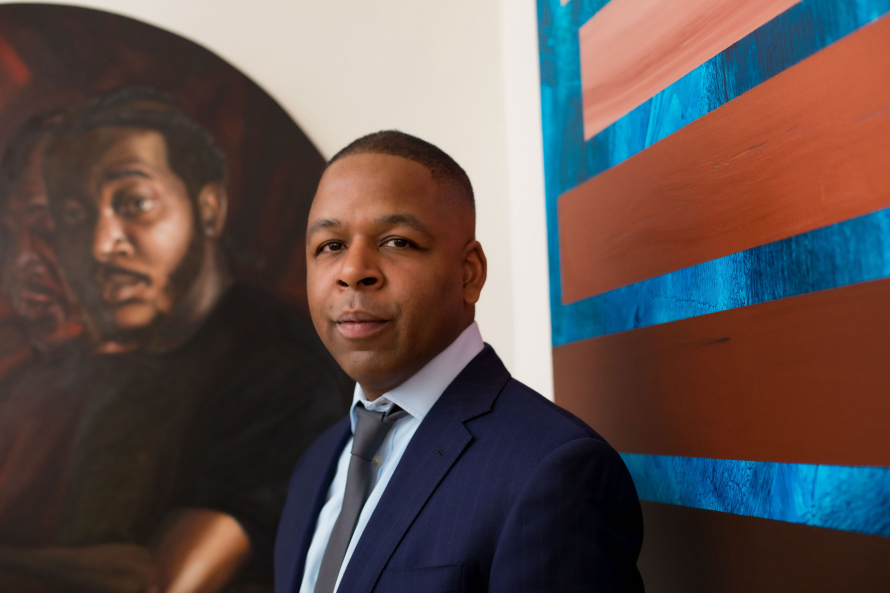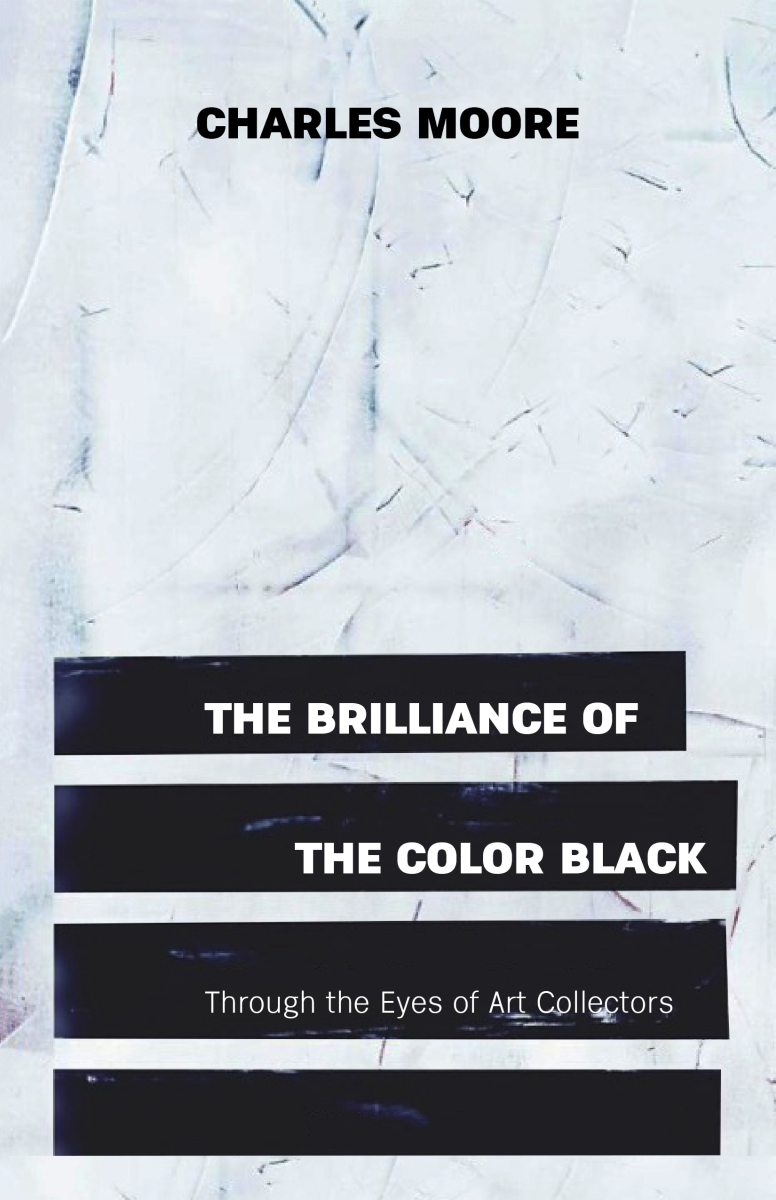At times it seems as if one must be Beyoncé, Sean Combs or Alicia Keys to be a Black art collector. Our conceptualization of art collecting has been so greatly influenced by classism and elitism that many of us are unaware of our own power to take part in the stewardship of Black visual and material culture. This is precisely why Charles Moore’s voice is essential for the present and future of African American art history.
Published with Petite Ivy Press, Moore’s newest book, The Brilliance of the Color Black: Through the Eyes of Art Collectors, takes seriously Blackness in all its forms as crucial to aesthetic innovation. The writer (and art collector himself) takes us through 16 chapters of his energizing thoughts, experiences and research on the topics of art history, museum studies and collecting. Each chapter, rich in detail and analytic wit, resists pithy summarizations, but it is worth parsing out a few of Moore’s theses here. In chapter 1, “Penetrating the Psyche of Artists through Literature,” Moore names a sense of “indescribability” that pervades the artist’s psyche when making art and the mind of the collector when collecting art. This fugitive emotion—inexpressible in mere words—intimately unites the artist and collector. Those of us who live with, for, and around contemporary art are not merely driven by economic incentive, but the permeating curiosity that draws us to art.

In this first chapter, Moore guides us through critical summaries of a range of academic and literary texts: The Souls of Black Folk by W.E.B DuBois (1903), Women, Race, & Class by Angela Davis (1981), White Girls by Hilton Als (2013) and The Bluest Eye by Toni Morrison (1970). When discussing Black art, music is inescapable: by chapter 2, Moore is exploring “The Power of Visual Albums,” focusing on Kanye West’s avant-garde music videos. Chapters 3 through 6 invite us to consider the work of museums in teaching global art histories, the ability of art to make amends for history (Titus Kaphar looms large here), and what the emergence of public art and histories of portraiture means to Black artists and collectors who are intervening into a field from which they have been historically ostracized.

Chapter 7, “The Disruptors,” is an enticing summary of visual tactics and their political implications taken up by artists Nina Chanel Abney, Laolu Senbanjo and Alteronce Gumby. Whether maintaining an air of mystery as a Black woman artist, refuting dominant narratives about Africanness or capturing the cosmos in rich black pigment, Moore is deeply intune to the artist’s desire for their work to be engaged in particular ways. It is apparent that he always asks artists about what they hope to gain from the relationship between the work and the public. While not explicitly said in the book, this transforms the understanding of the relationship between artist and collector away from a solely economic transaction and toward one of collaboration to bring art and the artist’s ideas to the public with the collector-curator-art historian (in this case, Moore) as trusted mediator.
The following chapters, “The Eclectics,” “In Support of Young Black Artists,” “The Business of Art,” and “Mentors to Art Collectors” perhaps might be best understood as Moore’s careful, ethnographic field notes and resultant epiphanies on the artists making work that challenges previous notions of what art is worthy of being collected and who is worthy of being a collector. Moore divulges what he knows, banishing notions of secrecy often plaguing the ivory tower and its elite sister the art world. Much like his first book, The Black Market: A Guide to Art Collecting (2020), he narrates his experiences and, the insight gleamed from them, as he traverses the terrain of being a Black American collector building and sustaining community with Black artists of various generations, mediums and philosophies.
Throughout, Moore’s prose is so accessible that it reads always as a warm invitation. It is as if there is a pleading that undergirds his writing: a plea for more Black people to take up space in all aspects of the contemporary art world and for the existing mainstream scene to welcome us as people who belong.
The final chapters, “On aesthetics” and “The Black Brilliance” remind us why we picked up this book: to inquire about the brilliance of blackness. Moore’s closing line for the book sums it up well: “This much is apparent even in the dimmest of lights and darkest of circumstances, and this is the true brilliance of the so-called noncolor: black.” Whether we understand blackness as the absence or the complete absorption of light, it is there: from the earliest cave paintings to the most pioneering contemporary art by Black American artists experimenting with the possibilities of Blackness in visual representation. Moore’s slippages between contemporary art, color theory, science and economics illuminate his masterful weaving of varied lenses that shape what is Black and Blackness. While some in his position might desire to do away with labels (“I am not a Black collector, I am a collector,”) Moore does not shy away from Blackness in his art collecting philosophies. This unapologetic stance exemplifies the care and rigor he brings to networking with Black artists and amplifying their voices, all in the name of positioning Blackness as an essential, magnificent element of art history, both the rich legacy of Black people and the abundant color.










 in your life?
in your life?

